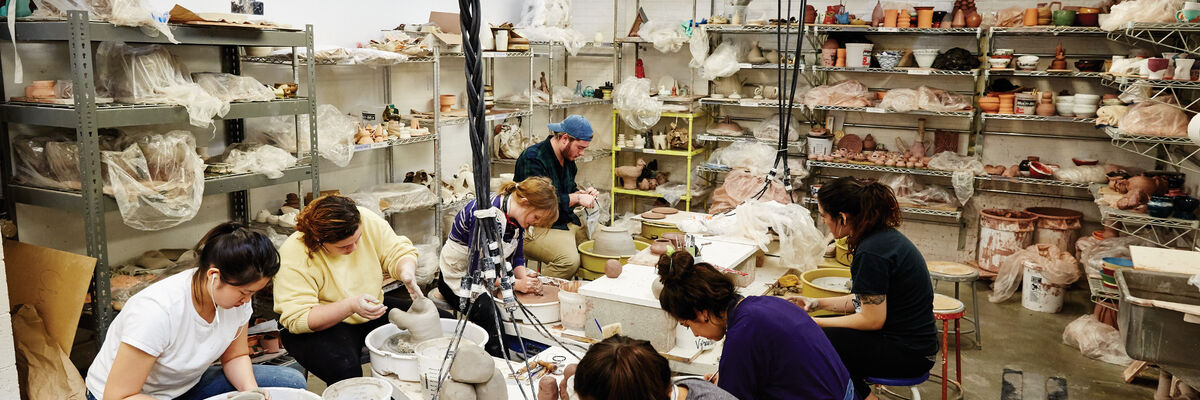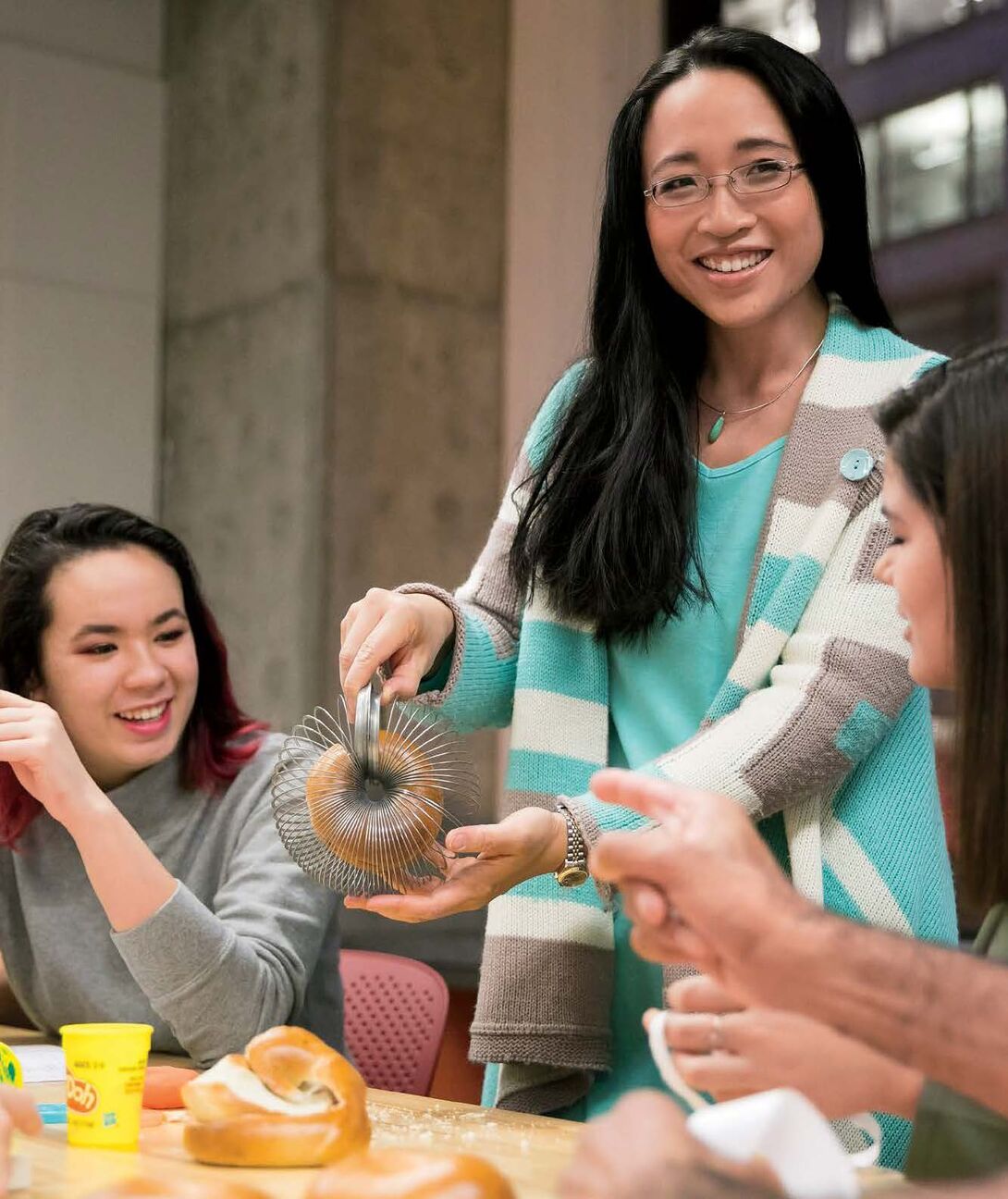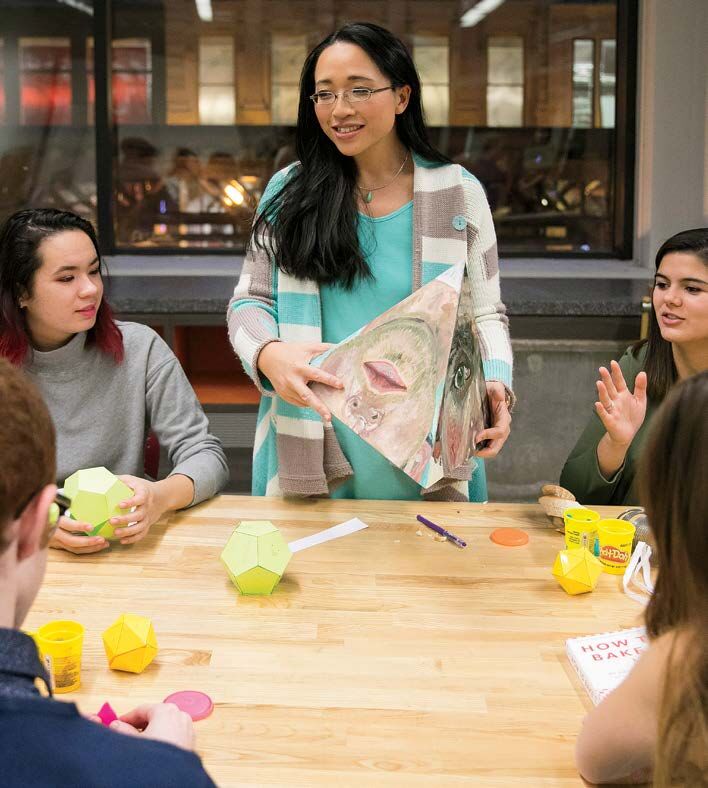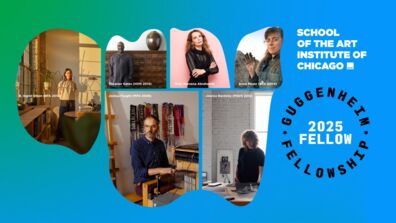
Painting by Numbers
Eugenia Cheng shows how art and math add up.
by Liz Logan

Students settle into their seats in Professor Eugenia Cheng’s classroom, and in a moment she has their full attention. She shares a funny story about the look a cashier gave her when she asked for bagels with the biggest possible hole. Her students laugh and watch intently as Cheng cuts a bagel into a Möbius strip, a one-sided surface discovered by two German mathematicians in 1858. Cheng uses bagels, Slinkies, and Play-Doh to illustrate key principles of topology, advanced mathematical concepts that can be difficult to grasp.
“She really cares about her students and cares about teaching,” says Paola Santos-De Soto (BFA 2020), an architecture student who studied with Cheng in the fall. “When she gives examples, she connects them to a part of our lives so we understand how [math] plays a role in everyday life.”
A theoretical mathematician and author of two books on popular mathematics, Cheng joined SAIC as scientist-in-residence in the spring of 2015. Since then, her class The Elegance of Abstraction has unleashed a contagious enthusiasm for math among SAIC undergraduates.
Every semester, there’s a waiting list for her class.
Teaching art students also fits perfectly with Cheng’s mission to make math accessible. Her first book, How to Bake Pi: An Edible Exploration of the Mathematics of Mathematics, cleverly married baking with her expertise in category theory, a highly abstract field concerned with how math works. After its debut in 2015, the book sold tens of thousands of copies and was translated into eight languages. Cheng was featured in the New York Times and appeared as a guest on The Late Show with Stephen Colbert. Last year, she published a second book, Beyond Infinity: An Expedition to the Outer Limits of Mathematics.
When she gives examples, she connects them to a part of our lives so we understand how [math] plays a role in everyday life.
Cheng was born in Sussex, England, and earned her PhD in mathematics from Cambridge University. She held postdoctoral positions around the world— including at the University of Chicago— and received tenure at the University of Sheffield in northern England. But after several years at the job, “I wasn’t happy, and it dawned on me that I wasn’t using all of my abilities,” she recalls.
Just as she planned to resign from her tenured position for good, she heard about SAIC’s Scientist-in-Residence program and applied. “I was so excited about the idea of investigating math from an art student’s point of view,” she says. “I knew that a lot of these students probably didn’t like math in high school because of how it was taught, and I wanted to help them find a new way to get back into it.”

In her course The Elegance of Abstraction, class projects are open-ended, guided by a concept but with no right answers. They open students’ minds and make them think deeply about the meaning of math.
“The whole idea is that you can make your own math, like making your own recipe in the kitchen,” Cheng says. “The projects lead my students to have profound discussions of concepts such as symmetry.”
Tiffany Holmes, dean of undergraduate studies, notes that while many students are eager to take science classes related to nature and the environment, strong interest in math classes is unusual. She observes, “Eugenia’s course deals with tough stuff, math concepts that are hard to visualize, but she makes them concrete using fun props like pies and biscuits.”
The Scientist-in-Residence program was initiated in 2014 to bring in top international thinkers in science, technology, engineering, and math to share their knowledge with art students. David Gondek, a mathematician who helped develop the Watson artificial intelligence system at IBM, first held the position. Holmes says, “A major part of our curriculum is teaching artists to embrace curiosity, think beyond their discipline, and engage with risky concepts that they don’t understand.”
Unlike other scientists-in-residence, whose engagements have been one semester, Cheng has been teaching at SAIC for two years now. This spring she is teaching a new course, Mathematical Secrets of Music, which combines her interest in math and her passion for music.
Holmes says SAIC is committed to engaging Cheng as a teacher “for as long as she wants to be here.”
